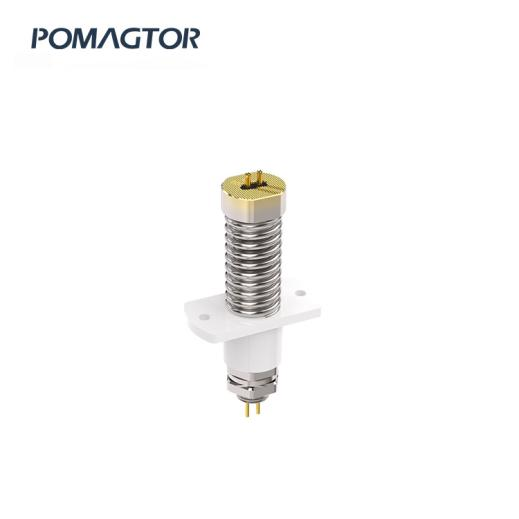How to Increase The Flexibility And Durability of High-Temperature Springs
Quenching and tempering treatment is a heat treatment that combines quenching and high-temperature tempering to improve the overall mechanical properties of the spring, such as strength, hardness, plasticity, and toughness. Tempering temperatures range between 500 and 680°C, and the sorbite structure is obtained following tempering. Quenching + high-temperature tempering is known as the quenching and tempering treatment. It can produce comprehensive mechanical qualities with strong strength, plasticity, and toughness, as well as secondary hardening in some high-alloy steels (such as high-speed steel). The downsides are that the process is more complicated, and the strength is lowered while the plasticity and toughness are improved.

How to increase the flexibility and durability of high current pogo pin
Deformation heat treatment can now be used instead of quenching and tempering treatment in some places. Austempering of ductile iron can replace 45 steel quenching and tempering (Note: deformation heat treatment: after the steel is heated, austenitized, and homogenized, it is rapidly cooled to the selected temperature based on the needs. However, when it has not been decomposed and converted, it goes through a reasonably considerable degree of plastic deformation before being quenched and tempered while still austenite to produce tempered martensite.
This combination of thermal deformation processing followed by quenching and tempering can achieve better strength at the same flexibility and toughness as standard quenching and tempering—high-temperature tempering results in spring products with high yield strength, elastic limit, and toughness. As a result, it is widely employed in critical structural components of automobiles, tractors, and machine tools, such as connecting rods, bolts, gears, and shafts.
High-temperature springs are classified as high-temperature compression springs, high-temperature tension springs, high-temperature torsion springs, high-temperature mold springs, and high-temperature disc springs. The high-temperature resistant spring is typically made of CRSI, CRV, or INCONEL superalloy. The highest suggested service temperature is 400°C650°C. Stainless steel materials can also accommodate temperatures below 400°C and choose a suitable material based on the application.
1. T631J1/T631 is utilized for heat-resistant and heat-treated springs with high tensile strength.
2. 630 stainless steel is a martensitic, precipitated stainless steel with high strength, hardness, and corrosion resistance. The product's mechanical properties are improved after heat treatment, and the compressive strength can reach 1100-1300 MPA (160-190 KSI). This grade cannot be utilized at temperatures above 300°C (570°F) or very low temperatures. It is resistant to corrosion caused by the environment and diluted acids or salts. It has a similar corrosion resistance as 304 and 430.
